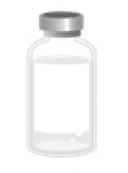According to the Centers for Disease Control and Prevention, drug overdose was the leading cause of adult injury death in the US in 2014. Opioid addiction is the leading cause of these overdoses, with 40% of the deaths related to prescription pain medications, and more than 20% related to heroin.
What is naloxone?
Naloxone, sometimes called Narcan, is a special medication that stops overdose. Side effects of opioid use include drowsiness, constipation, difficulty breathing, opioid dependence, addiction, and even overdose. Opioids include prescription pain medication and other opioids like heroin.
Naloxone is effective on all opioids and it reverses the severe breathing problems and overdose risk that opioids can cause.
Below is a list of generic and brand names for some of the most commonly prescribed opioids.
| Generic Name | Brand Name |
|---|---|
| Hydrocodone | Vicodin, Lorcet, Lortab, Norco, Zohydro |
| Oxycodone | Percocet, OxyContin, Roxicodone, Percodan |
| Morphine | MSContin, Kadian, Embeda, Avinza |
| Codeine | Tylenol with Codeine, Tylenol #3 |
| Fentanyl | Duragesic |
| Oxymorphone | Opana |
| Hydromorphone | Dilaudid |
| Methadone | Dolophine, Methadose |
Naloxone has saved thousands of lives in Massachusetts (STOP Addiction in its Tracks), Rhode Island, and across the US (Naloxone Success in the US).
Naloxone is safe, effective, and easy to use. It can be administered via a nasal spray or intramuscular injection. Below are the four forms of naloxone that may be available to you in your community or at a local pharmacy.
Multi-Step Nasal Spray

Single Step Nasal Spray

Intramuscular Injection

Auto-injector

Where can I get naloxone?
People who use opioids, or their family and friends, can receive Naloxone Rescue Kits and opioid overdose prevention education from many area pharmacies. Ask your pharmacist if you are interested in learning more.
Many pharmacies have standing orders for naloxone, and a prescription is not needed to get a naloxone kit. Follow these links to find participating pharmacies.
- Massachusetts (http://www.mass.gov/eohhs/docs/dph/quality/boards/pharmacy/pharmacies-so-nalaxone.pdf)
- Rhode Island (http://www.noperi.org/cpa.html)
What are the signs of overdose?
Signs of an overdose can include:
- Slow breathing or not breathing at all
- Lips and fingernails turning blue or gray
- Not responding when called or shaken
- Snoring deeply
- Pale and clammy skin
Patient education training videos and additional information on signs of overdose are available at Prescribe to Prevent.
Always call 911 when faced with a potential overdose emergency.
Additional Information and Resources
Opioids and Opioid Safety
- National Safety Council: What You Can Do – Prescription Painkillers
- MyTOPCare- BMC Opioid Safety, Misuse, Addiction, and Overdose Prevention Resource
- I’m the Evidence. Naloxone Works. Faces and voices of overdose prevention with naloxone
Support Groups
Learn to Cope
Various locations in Massachusetts.
Peer support network for families dealing with addiction and recovery
AHOPE
Boston, MA
Harm reduction and needle exchange site
AIDS In Action
Cambridge, MA
Needle exchange and overdose prevention program
Anchor Recovery Community Center
Pawtucket and Warwick, RI
Recovery coaching and support services program
Massachusetts Substance Abuse, Information and Education HelpLine
Provides resources for treatment centers and support groups
1-800-327-5050
Treatment Centers
PAATHS- Addiction Treatment Services through Boston Public Health Commission
Boston, MA
Substance abuse treatment services and prevention programs.
Project ASSERT at the Boston Medical Center
Boston, MA
Substance abuse treatment services and prevention programs.
Rhode Island Department of Behavioral Healthcare, Developmental Disabilities, and Hospitals Treatment Programs
Rhode Island
Substance abuse treatment services and prevention programs.
Other Harm Reduction Resources
Prescribe to Prevent
Helpful information to start prescribing and dispensing Naloxone
State-specific naloxone related legislation from Prescription Drug Abuse Policy System (PDAPS)
A NIDA resource that also has maps and data on Prescription Drug Monitoring Program and Good Samaritan 911 Laws
Harm Reduction Coalition
Advocacy and campaign building organization to promote health and dignity of individuals and communities impacted by drug use
Resources for Pharmacists and Providers
MassTAPP (Massachusetts Technical Assistance for Prevention Partnership
Helpful information for pharmacies to set up standing order and dispense naloxone
MassHealth Pharmacy Program
Information for Pharmacists about the MassHealth Pharmacy Program (including how to bill naloxone to MassHealth)
Massachusetts State Policies on Naloxone Distribution through Standing Order
Information for dispensing naloxone using a standing order
Massachusetts Board of Registration in Medicine Statement
Statement adopted 9/10/2014 by MA Board of Registration in Medicine describing prescribing practices surrounding naloxone
Rhode Island Department of Public Health
Rhode Island Emergency Regulations pertaining to the pharmacy naloxone standing order
News and Research
Overdose Prevention Alliance
Blog containing the latest in scientific research on naloxone, overdose prevention, and opioid safety
About
This information is provided through the Maximizing OpiOid Safety with Naloxone (MOON) Study and the University of Massachusetts Medical School.
The MOON Study is a 3-year demonstration project funded by the Agency for Healthcare Research & Quality (AHRQ). Researchers from the Boston Medical Center, Boston University, Lifespan Hospitals of Rhode Island, and the University of Rhode Island are working together with local pharmacies to determine the best way to provide naloxone in the pharmacy setting. The University of Massachusetts Medical School is collaborating with the MOON Study to educate consumers about access to naloxone in pharmacy settings.
